
by Danielle S. Williams | Oct 3, 2025
Peanuts, also known as groundnuts, earthnuts or goobers have a long history of cultivation. Unlike tree nuts, peanuts are grown underground which is how they earned the nicknames groundnut or earthnut. Originally native to South America, peanuts made their way to North America from Africa, where they were introduced by African slaves in the early 1800’s.
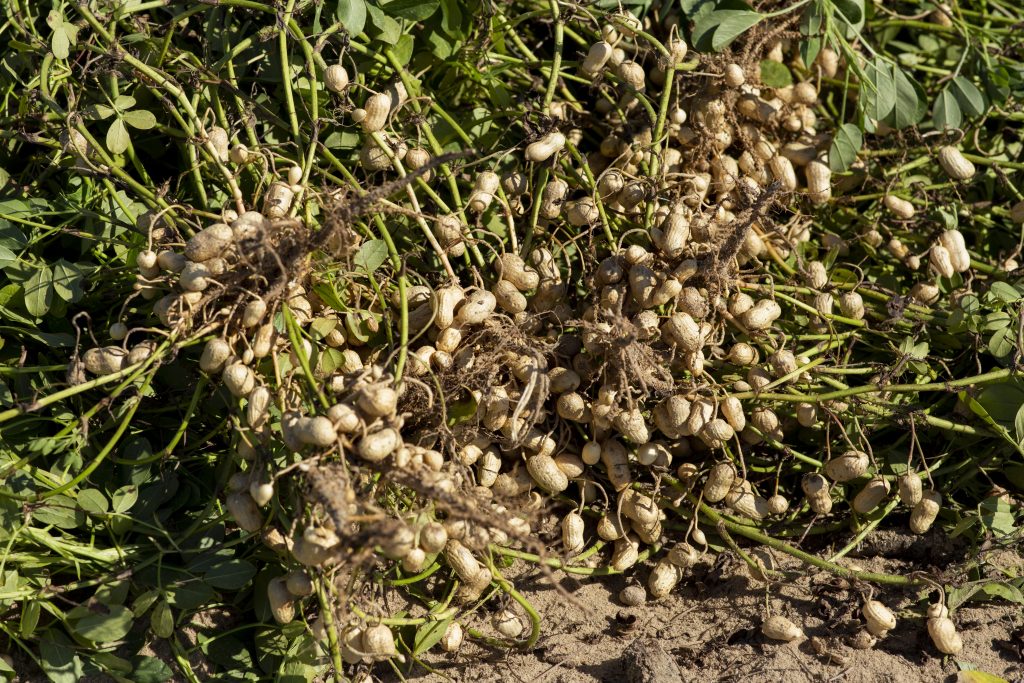
Overturned peanuts in a field ready to be harvested. UF/IFAS Photo by Tyler Jones
First grown in Virginia, peanuts were grown mainly for oil, food, and as a cocoa substitute. During this time, they were regarded as food for livestock and the poor. It wasn’t until the late 1800’s did their demand increase as there was a need for an affordable, high-protein food during the Civil War and World Wars. Their popularity also increased when showman, P.T. Barnum began selling hot roasted peanuts at his traveling circuses.
In the 1900’s, peanuts became a significant agricultural crop when the cotton boll weevil threatened the South’s cotton crop. Through the research findings and suggestions of Dr. George Washington Carver, peanuts were grown as a successful cash crop and contributed greatly to the sustainability of the farm. Though Dr. Carver did not invent peanut butter, he did invent more than 300 new uses for the peanut and peanut byproducts including shaving cream, leather dye, coffee, ink and shoe polish.
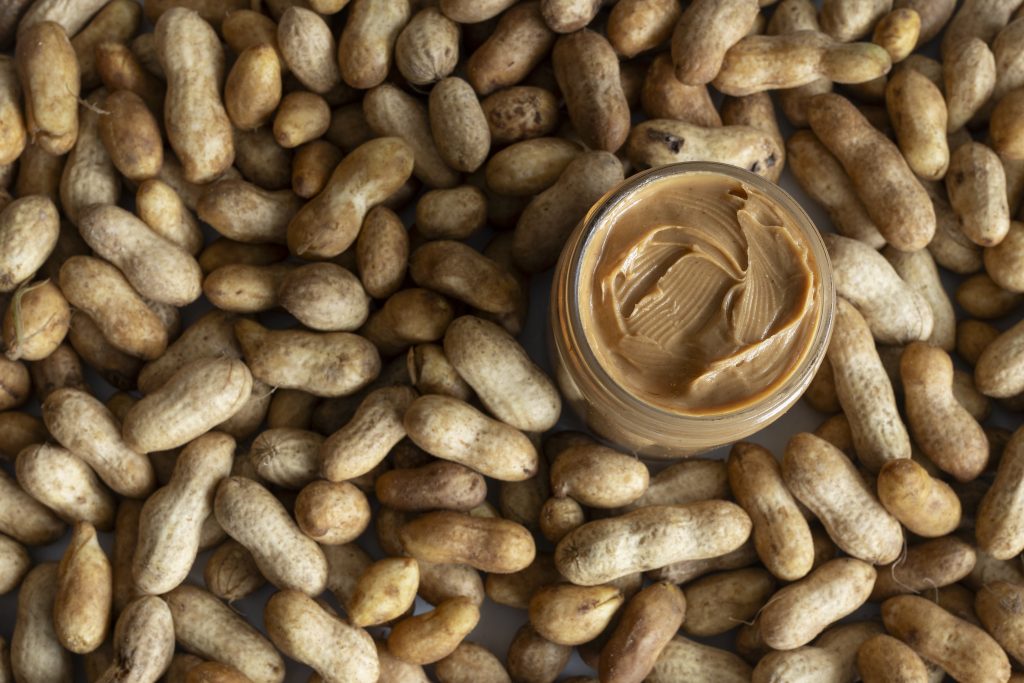
Jar of peanut butter surrounded by loose shelled peanuts. UF/IFAS Photo by Tyler Jones
Today, peanuts are grown in 13 states, across the United States and the U.S. is the third largest producer of peanuts in the world. In 2024, Florida harvested 157,000 acres of peanuts, averaging about 3,500 pounds per acre with a production value of roughly $149.5 million (Annual Crop Production 01/10/2025).
Peanut Fun Facts:
- 99% of peanut farms are family-owned, businesses averaging 200 acres
- There are four different types of peanuts – Runner, Valencia, Spanish and Virginia
- Peanut plants are legumes and fix beneficial nitrogen back into the soil
- Peanut butter is an excellent source of niacin, and a good source of vitamin E and magnesium
- Peanuts do not contain cholesterol and are low in saturated fat
- Peanut butter accounts for half of all peanuts eaten in the U.S.
- It takes about 540 peanuts to make a 12-ounce jar of peanut butter
- There are enough peanuts in one acre to make 35,000 peanut butter and jelly sandwiches
- The average person will eat almost 3,000 peanut butter and jelly sandwiches in their lifetime
- Women and children prefer creamy peanut butter, while most men opt for chunky
- Peanut allergies affect about 1.8% of U.S. children and 1.1% of adults the U.S. population
UF/IFAS Peanut Butter Challenge
Help us fight hunger by donating unopened, unexpired jars of peanut butter to the Peanut Butter Challenge! Every year UF/IFAS Extension Offices across the state coordinate the Peanut Butter Challenge to address hunger and food insecurity in our area. You can support the challenge and help fight hunger by donating unopened, unexpired jars of peanut butter, now through October 31st, 2025 to your local UF/IFAS Extension office. Thanks to support from the Florida Peanut Producers Association and the Florida Peanut Federation, your peanut butter donations go even further!
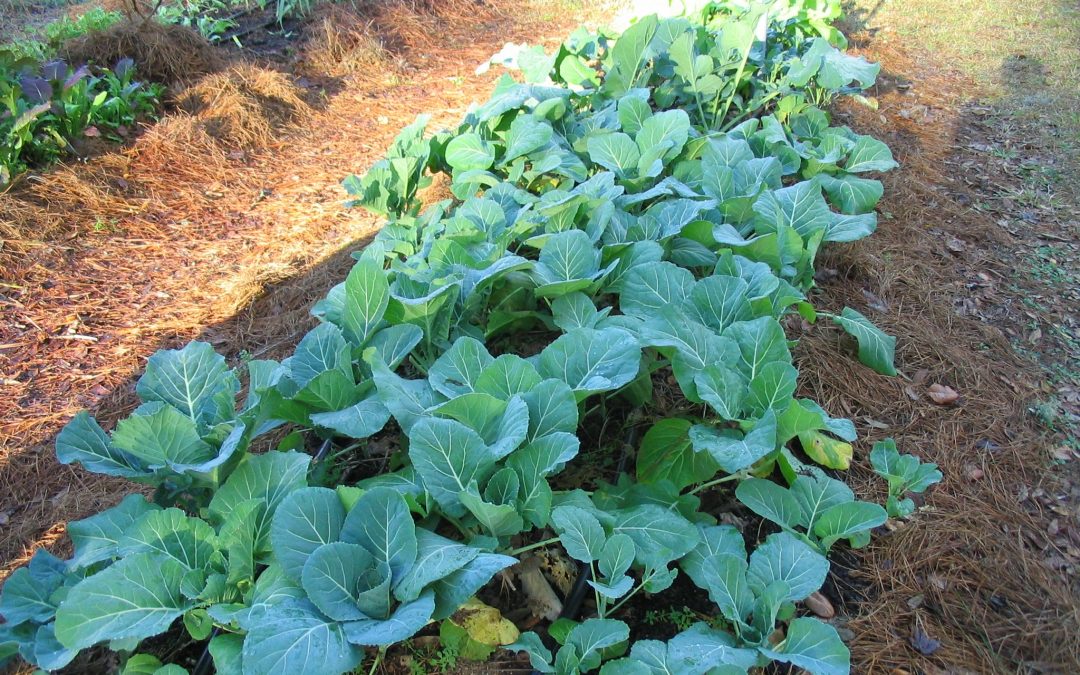
by Molly Jameson | Oct 3, 2025
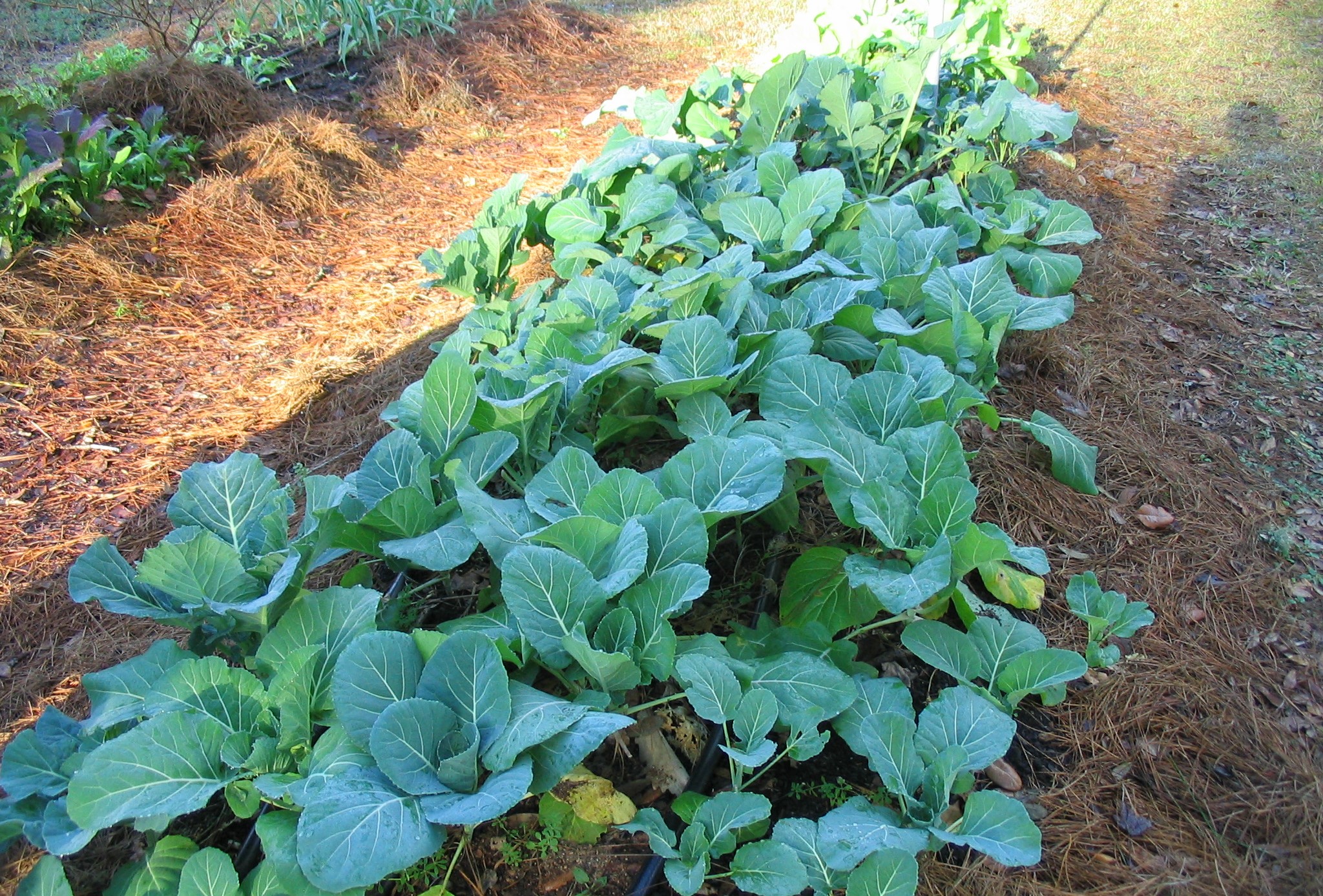
Even a short row of collards can yield basket after basket of tender leaves. Photo by Donna Legare.
Fall Gardening Spotlight: Collard Greens
When cooler weather finally rolls into the Panhandle, collard greens (Brassica oleracea var. acephala) are one of the most reliable crops you can grow. Members of the cabbage family, Brassicaceae, collards are hardy, low-maintenance, and don’t mind a little frost – in fact, a nip of cold will sweeten their flavor. In my neighborhood, it’s not unusual to see collards thriving in gardens all the way through winter and early spring.
Collard seeds can be directly sown starting in late August, with transplants best set out from September through November. If you start from seed, expect to harvest in two to three months. For a quicker turnaround, grab transplants from a local nursery and you’ll be cooking collards by Thanksgiving.
When late summer and early fall heat lingers, young plants may need a little extra care. Providing afternoon shade with a 40 to 50% density shade cloth can keep seedlings from wilting and help them establish more smoothly during warm spells in September. Regular, even watering is also important, but make sure the soil drains well.

A Georgia Southern collard started indoors in August and up-potted in early September, now ready for transplanting into the fall garden. Photo by Molly Jameson.
Space plants 12 to 18 inches apart in rows two to three feet wide, since collards grow large and need room to spread. In raised beds, you can space plants the same 12 to 18 inches apart in all directions, often in a staggered grid, to make the most of the space. For a steady supply, consider staggering plantings every couple of weeks through early November. Collards are among the more forgiving fall crops – just give them at least six hours of sun, nutrient-rich soil, and steady moisture.
One thing I’ve learned from experience: don’t be shy about picking leaves. Collards will keep producing as long as you harvest from the bottom up, leaving the center growing tip alone. I’ve found the leaves taste best when they’re picked young, around 10 to 12 inches long. If you leave them on longer, they’ll toughen up a bit but hold up well in slow-cooked dishes. Even a short row in the garden can keep a family in collards for much of the season, which helps explain why they’ve been a fixture in Southern kitchens for generations.
Some varieties that do well in our area include several open-pollinated classics. ‘Georgia Southern’ has stood the test of time for its tender, large leaves, while ‘Vates’ is another reliable option, known for its compact size and resistance to bolting. For a collard that’s as pretty as it is productive, try the heirloom ‘Alabama Blue.’ Its bluish leaves are streaked with purple, adding beauty to the garden as well as the plate. If you’d like to try hybrid varieties, look for ‘Champion,’ bred from ‘Vates’ with improved cold tolerance and disease resistance, or ‘Top Bunch,’ which grows quickly and recovers fast after harvest. You’ll usually find at least one or two of these on the racks at local plant nurseries.
While collards are tough, do keep an eye out for caterpillars such as cabbage loopers and diamondback moths, which can chew holes in the leaves. Picking them off by hand usually can keep them under control if you scout often, though a light spray of Bacillus thuringiensis (Bt) can also help if they get ahead of you. Be sure to follow the label directions carefully when applying.
Once you’ve got a basket full of collards, you can make them as simple or as dressed up as you like. I usually just sauté them in olive oil with garlic, salt, and a pinch of smoked paprika. They also slip nicely into soups, mix well with pasta, and can even be blended into green smoothies.
Collards are tough, productive, and delicious – and if you plant a few this fall, you might just find yourself sharing leaves with neighbors well into the new year.
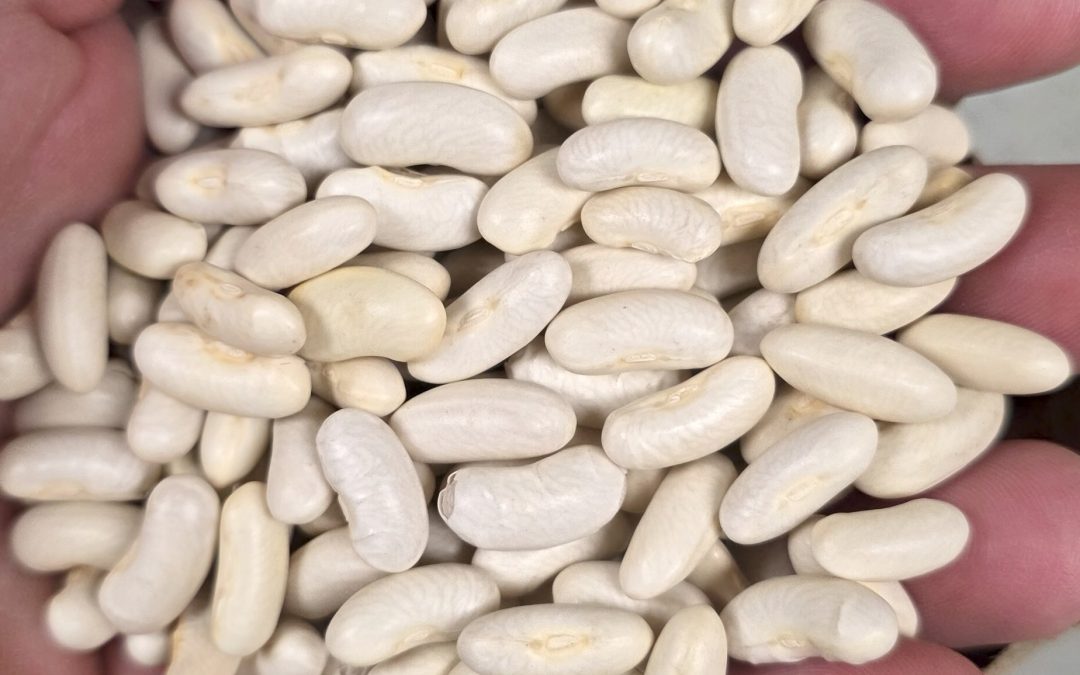
by Lauren Goldsby | Sep 25, 2025
While planning my fall garden I have been partaking in one of my favorite pastimes—shopping for seeds. This is always more fun to me than planting the seeds. Seeds come in many different packages and just like wine, you can be drawn in just from the carefully crafted label. Many of the seed labels I encountered shared the same marketing phrase, “non-GMO seeds”, which is like seeing a gluten free label on your pineapple. It was never an option!
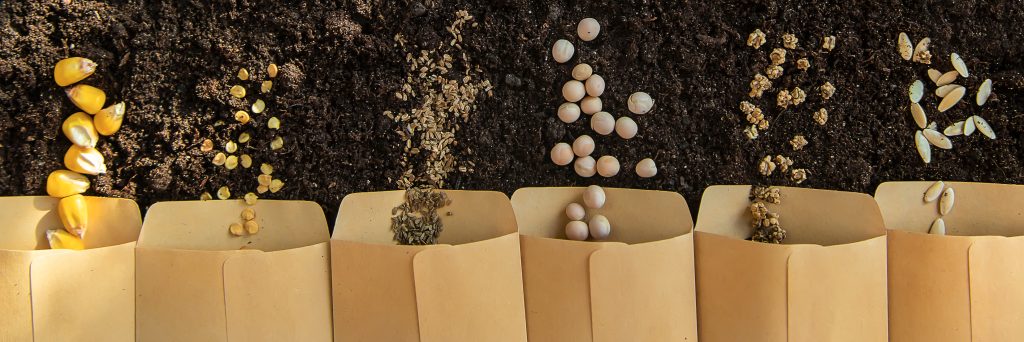
Genetically engineered plants take decade(s) to produce, test and release. They are expensive and are not typically sold in small quantities. These patented seeds will not be sold to you by accident. GMO crops that are grown and sold in the US on a commercial scale include alfalfa, apple (Arctic), canola, corn, cotton, eggplant, papaya, pineapple (pink), potato, soybean, squash, sugarbeet, and sugarcane. More information about each crop here: https://www.ams.usda.gov/rules-regulations/be/bioengineered-foods-list
Recently, a few GE seeds have been developed for the home gardener.
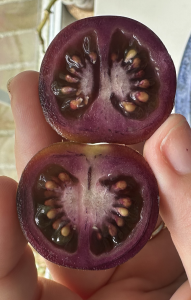
The Firefly Petunia glows in the dark thanks to the insertion of genes from a bioluminescent mushroom. More info
The Purple Tomato has purple skin and purple flesh thanks to the insertion of snapdragon genes. This is the first genetically engineered food crop developed for the home gardener. More info
These seeds are only available from certain retailers, and you will pay a premium for this technology.
When purchasing seeds consider other factors like season and variety. “Right plant, right place” – you hear us say those four words again and again here at the Extension Office. That’s because plant selection is one of the most important things to consider for gardening success. If you were to start a watermelon from seed right now it may do well at first. However, they thrive in the heat of the summer, and they will not like the short, cool fall days. A plant growing in the wrong environment will be stressed. That stress attracts pests and can make a plant more susceptible to pathogens.
Set yourself up for success by growing plants when they are in season. Don’t be tempted by the seeds you see on the aisle end caps. These are not always specific to each region and just because they are selling it now does not mean it should be grown right now. Decide what you are going to grow before you go to the store! The Florida Panhandle Planting Guide is a great resource to use for planning your garden. If you find that you purchased seeds for the wrong season save them for the next one—and consider that your newest hobby may be seed collecting.
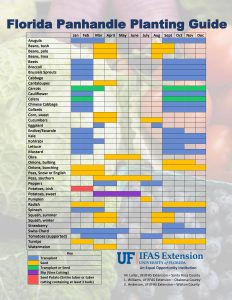
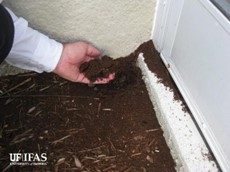
by Donna Arnold | Sep 25, 2025
When the Ground Moves.
It started with a quiet day, and a curious bag of sand brought into the extension office but inside was more than just sand. It was crawling with tawny crazy ants (Nylanderia fulva), one of Florida’s fastest-spreading invasive pests. Known for their erratic movement and massive colonies that can make the ground seem alive, these reddish-brown ants are now a growing concern for gardeners across some Florida counties. Unlike fire ants, tawny crazy ants don’t sting, but they can nip with their chewing mouthparts. Their sheer numbers can overwhelm outdoor spaces, crawling on people and spoiling the enjoyment of patios, gardens, and recreational areas. They nest in moist, protected areas such as leaf litter, potted plants, and under debris, often forming sprawling colonies with multiple queens.
Beyond being a nuisance, these ants pose serious risks. They’ve been known to cause electrical shortages by infiltrating equipment, sometimes leading to costly damage. In some Caribbean islands, they’ve harmed organic crops, and in Colombia, infestations have even led to the death of small animals due to asphyxiation. Larger animals have been attacked around sensitive areas like the eyes and hooves. Tawny crazy ants also disrupt local ecosystems. Their aggressive spread displaces native ant species and reduces biodiversity. While Florida hasn’t reported agricultural damage yet, the potential remains, especially in organic farming systems.

Identification Tips
Workers are small (less than 1/8 inch), monomorphic, and covered in fine hairs that give them a matte appearance. They have one petiole segment and 12 antennal segments, including a long first segment called the scape. Colonies don’t form mounds but may tunnel in sandy soil. Queens are often found among workers, especially in warmer months. If you suspect an infestation, contact your local UF/IFAS Extension office.

Management Challenges
Controlling tawny crazy ants is notoriously difficult. Spraying alone is ineffective, and most insecticides only work for a few days before ants’ return. Integrated Pest Management (IPM) is the recommended approach. IPM combines multiple tactics, starting with accurate identification and monitoring, followed by strategic product application and habitat modification. Professional pest control services that specialize in IPM are often necessary. Timing is critical, and overuse of products is not only ineffective but may violate legal limits. Keep records of infestation locations to anticipate reinvasion, which typically occurs annually. While complete eradication is unlikely in established areas, population suppression is achievable. Interestingly, research suggests that within about a decade, populations may naturally decline, allowing native species to rebound.
Tawny crazy ants are more than just a backyard annoyance they are a complex ecological and household threat. Awareness, early identification, and professional management are key to minimizing their impact. As these ants continue to spread, staying informed and proactive will help protect your property and Florida’s delicate ecosystems.
For more information call or visit your local extension office or follow the link below.
https://edis.ifas.ufl.edu/publication/IN1076
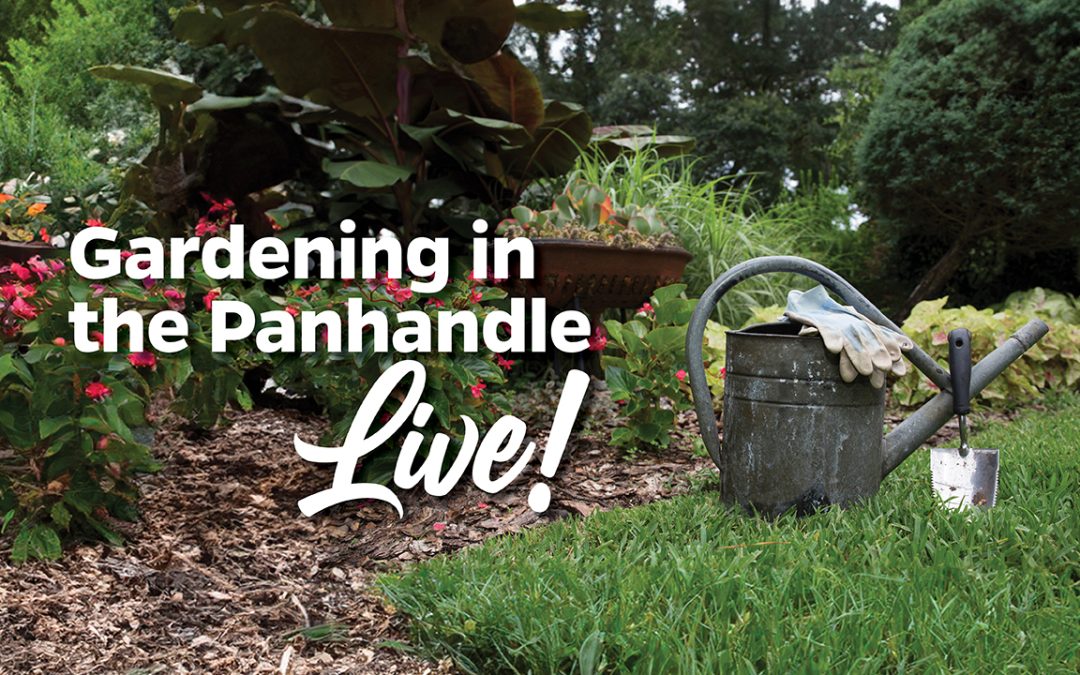
by Julie McConnell | Sep 18, 2025
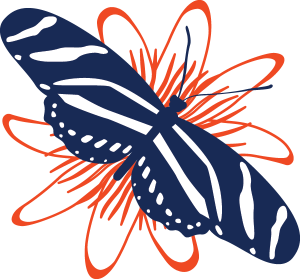 Last month we focused on the 2025 Great Southeast Pollinator Census and how Florida residents and visitors could join in this citizen scientist project. Since this was only the second year Florida participated, we knew you would have lots of great questions!
Last month we focused on the 2025 Great Southeast Pollinator Census and how Florida residents and visitors could join in this citizen scientist project. Since this was only the second year Florida participated, we knew you would have lots of great questions!
Below is a recap of your inquiries and any references the panelists shared in case you wanted to dig deeper into the topic.
What is the Great Southeast Pollinator Census (GSEPC) and what is the data used for?
The pollinator census brings awareness of pollinators, encourages people to create habitat, and collects information that can be used to create baseline numbers and compare the population growth or decline over time.
How to identify bees, wasps, and other pollinators I see?
Luckily, you do not have to identify these insects to species – you only have to classify them into broad categories. Resources to help you spot key characteristics can be found here:
Bees of Florida
Pollinator Census Google Site
What time of day should I count?
Mornings and evenings are a great time to count because it is comfortable for the counter but also consider that time of day will affect the insects seen. For instance, many moths and beetles are active at night while honey bees are active during the day. Basically, there is no wrong time to count!
Will we be able to indicate which plants and whether or not they are native or non-native?
The GSEPC count sheet has a place for the plant name you are observing which can be common or scientific. There is not a designation on the form for native/non-native but if you use the scientific name that is easy to check when data is available.
Great Southeast Pollinator Census Counting Sheet
How to best encourage neighbors to get involved?
Print off some extra count sheets and invite people to join you or host a pollinator party!
What can we do to increase pollinators in our yards?
Provide nesting habitats for native pollinators such as undisturbed bare ground, hollow stems, small debris piles, and pollinator hotels. Be sure to maintain pollinator hotels to encourage use.
Responsible use of pesticides – always read labels and avoid products with pollinator warnings.
Pollinator Hotels
Plant diverse flowering plants to provide pollen and nectar and provide water resources.
Simple Steps to Create a Pollinator Paradise in Your Landscape
Provide Water for Pollinators
Are bumble bees a protected species?
There are almost 50 different bumble bee species in the United States, and not all live in Florida. Two are listed as protected species, one that occurs in Oregon and another in the Central Plains and may be in our area. The common species we see in Florida, American Bumble Bee and Eastern Bumble Bee are not currently listed as protected or endangered. Find a Species | U.S. Fish & Wildlife Service
Resources for Schools and Home Schools
Some public libraries have “Seed Libraries” and give out seed which may be appropriate for pollinators.
Seedlings for Schools Grants
Panelists favorite flowers for bees and other pollinators:
Abbey – purple coneflower and other Echinacea, Black-eyed Susan, Zinnia, Coreopsis
Beth – buttercup, goldenrod
Mark – yarrow, Stoke’s Aster (native to FL), Vitex agnus-castus Chaste Tree
Daniel – Vitex, Blue butterfly Clerodendrum, Firebush
Anything in the Aster Family!
Balance of controlling pests in vegetable garden but still welcoming pollinators.
Be tolerant of damage! Regardless of your tolerance level of damage be sure to use Integrated Pest Management strategies which may include trap crops, cover crops, and scouting regularly so you can catch pests early and hand pick when possible. If a pesticide is needed, use very specific targeted products such as Bt, soaps, or oils instead of broad-spectrum pesticides. (Always ensure products are listed for use on vegetable gardens and follow labels). Pesticide Labeling – A Guide to Users
Do you need a license to keep honey bees?
A license is not required; however, all bee hives must be registered with the Florida Department of Agriculture and Consumer Services (FDACS).
Beekeeper Registration– Florida Department of Agriculture and Consumer Services
UF/IFAS Research and Extension Honey Bee Lab has great resources for beekeepers!
If you missed this or other episodes be sure to check out our YouTube Playlist













